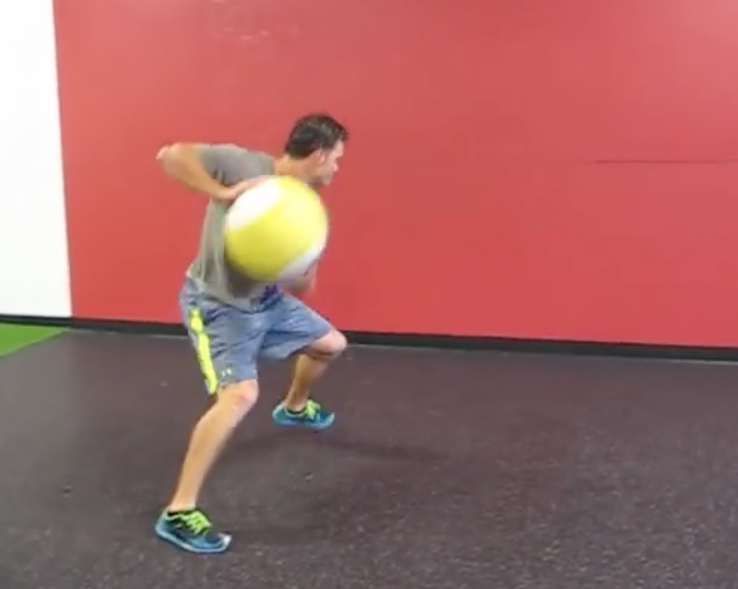
Random Thoughts on Sports Performance – Installment 25
As we wind down to the holidays, here’s the last installment of Random Thoughts on Sports Performance for 2016.
1. One of the most overlooked benefits of medicine ball training might be the frequency at which it can be trained.
Before I get to this point, check out this old video of mine on the Absolute Strength-Speed Continuum (if you haven’t seen it already):
One of the things I’ve been thinking about is that medicine ball training doesn’t absolutely crush people the same way that absolute speed work (whether it is sprinting, jumping, throwing a baseball, or something comparable), strength-speed (Olympic lifts, jump squats), and heavy lifting does. You could likely train it every day, and while it wouldn’t be optimal, people could handle it and still derive some benefit.
More than likely, it’s just a sweet spot in the “Force = Mass x Acceleration” equation. The mass is pretty low (especially since there really aren’t huge ground reaction forces like we see in sprinting), and the acceleration drops off quite a bit. This likely parallels what we see with baseball vs. football throwing; the football is just much less stressful.
This doesn’t help us a lot in the quest for developing peak power, but it does give us a really good option for training power – especially rotationally – more frequently.
2. Good thoracic positioning will help you make the most of your overhead medicine ball training.
Speaking of medicine balls, check out this side-by-side comparison of two athletes that I recently posted on my Instagram account. On the left is one with a “normal” thoracic curvature and set of movement capabilities. He can get into thoracic extension at the top, and effectively flex at the bottom to deliver the scapula to the correct position for ball release. On the right, though, notice how flat the upper back stays at the ball release position. We’d like to see him able to round a bit more to ensuring a good convex-concave relationship between the scapula and rib cage.
3. Narrow exercise selections make for impressive lifters, but less impressive athletes.
With our typical minor league baseball player, we may actually have time to get through six 4-week programs over the course of an offseason. In six months – especially if we happen to have an athlete who is genetically gifted for strength development – we *could* get guys freaky strong on a few big lifts. We choose not to, however. Why?
A narrow exercise can lead to some very impressive weight room performances on a few lifts: squat, bench press, deadlift, clean, etc. This specificity can be great if you want to be a one (or three) trick pony (powerlifter), but not quite as helpful if you’re an athlete who actually needs to change directions. To this end, a few thoughts:
a. I’d much rather see an athlete with a more versatile “strength portfolio.” Show me a 200-pound athlete who can front squat in the mid-300s, deadlift in the mid-500s, turkish get-up in the 80s, and do axial-loading single-leg work in the mid-200s, and I’ll show you a guy that has a great foundation to really move well.
b. These strength numbers aside, eventually, your priority needs to shift from just building strength to actually using that quickly. Simply chasing a number on one lift can quickly leave you unprepared in a particular movement/plane or in the context of creating more usable strength. I out-deadlift all of our pro baseball players, but many of them can broad jump longer than I can; who is using their force more efficiently?
c. If you do insist on this narrower “main” exercise selection can be offset by variety in warm-ups, sprint/agility work, and assistance strength training drills.
d. I think narrower exercise selections have the most benefit in beginning lifters and teenage athletes who need to build a solid foundation and awareness of putting force into the ground. I’d honestly have no problem with sticking with the same 3-4 “main” exercises for 3-4 months straight in this population, although you have to be sensitive to the fact that some athletes will get really bored quickly. For this reason, we’ll try to simple incorporate subtle changes; as an example:
- Month 1: Trap Bar Deadlift (6-8 reps per set)
- Month 2: Trap Bar Deadlift (4-5 reps per set)
- Month 3: Trap Bar Deadlift vs. Band or Chains
- Month 4: Low Setting Trap Bar Deadlift
Obviously, we don’t rigidly adhere to this, but it gives you a feel for how to add some variety without overhauling things and having to completely re-groove a new skill.
That’s all for 2016; happy holidays!


